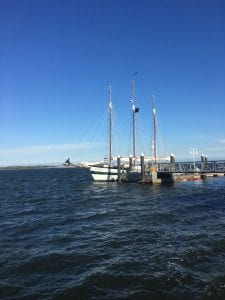This was a fascinating documentary on why people might be becoming obese.Dr. Giles Yeo from the University of Cambridge argued while some people argue that it might have to do with being lazy, not caring, and simply eating takeouts, he claimed that it might be genetics. He has dedicated his entire life to testing different genes and trying to figure out a pattern between them.How is it possible that one twin could be so lean while another fat? Does genetics play a role? How come not matter what diet an individual tries, it does not work for him or her? There could be many other reasons, but this entire documentary mostly focused on genes and diet. Some individuals that were interviewed stated that they eat for comfort while others stated that they just did not feel full and had to consume more. One guy, named Les, in pain said that he would take food to his bedroom, lock himself up in his room and just eat. He dealt with being bullying by eating and now after losing his wife , he dealt with his loss by eating take outs. He could not exercise due to his arthritis and other health conditions. Dr.Yeo throughout his journey too relied mostly on fast food because like he stated “that is what’s available” (Why Are We Getting So Fat). This wouldn’t have happened ten years ago.To burn the fish burger, large fries, and apple pie he would have to walk four hours but he could not because he had to drive for four hours, to get to his destination. Dr.Tony Goldstone, who was an obesity expert, did an experiment with a group of people who were trying to lose eat, by giving them an option to eat whatever they want. In the end, Dr.Goldstone told the participants that since they had two strands of an FTO gene, it was making it harder for them to lose weight. In essence, it was not because they were not eating and exercising enough, but rather their genes preventing them from reaching their goals.Some doctors were trying to give patients a shot containing hormones that would make them have less of an appetite, that way people would eat less. On the other hand, other doctors were trying to find ways to use human feces to make people lose weight.
I thought this was a great documentary because it goes well with what we are currently watching in class (Food Inc). I thought it was very interesting because what we eat and our own biology could play such a crucial role in this , it’s just astonishing. So many of us do not realize that the food chains have expanded to other parts of the world and it for the most part is causing more harm than good. It made me question life and how we underestimate the value of healthy eating. I feel like we need to go back to growing our own food and appreciating the process of doing it.
I don’t know how to add a Netflix link but you can find this documentary on Netflix. Just type Why Are We Getting So Fat?











